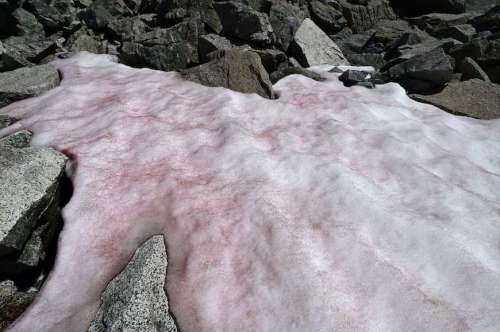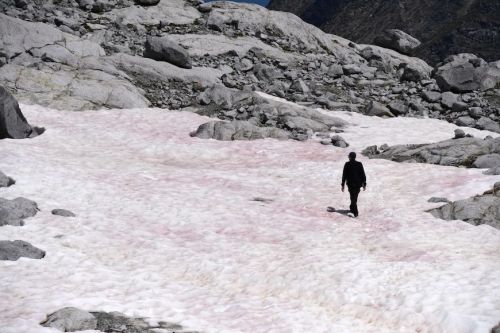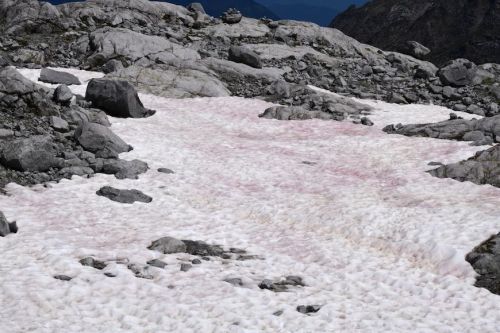My best friend and I always talk about how the color pink is a soothing balm in a chaotic world, so I hate to deliver this little dash of doom. Recent photos captured of the rose-colored snow at the Presena Glacier in the Italian Alps might be a cute sign of climate change. Sometimes referred to as watermelon snow, the glaciers are not quite millennial pink, though it does fit with a generation that has seen the world approach the brink collapse.
How did this pink snow came to be? Well, watermelon snow is usually found in spring and summer due to growth of a certain type algae, which needs light, warmth, and water to flourish. When it’s too cold, the algae lays low (literally) beneath the snow and ice, but warmer weather allows it to be revealed at the surface. Biagio Di Mauro, researcher at the Institute of Polar Sciences, suspects that this particular strain of Chlamydomonas nivalis is not uncommon to the Alps. Likewise, he points out that the direct tie to climate change is still inconclusive. But there is reason to be suspect about this watermelon snow, and that lies in its inherent pinkness. Look how pink!

With pink snow, a phenomenon called the albedo effect comes into play. The color white reflects light; when you have white snow, it bounces the sun’s rays back into the atmosphere and keeps the temperature chill. That’s because the whiter the snow, the more effective it is at bouncing the sun’s rays back into space, keeping things cool. More dark land means more heated ground and more melting. There’s even a bit of research that suggests red algae blooms reduce snow by as much as 13 percent. So the fact that algae is thriving and tainting the natural color of snow so it absorbs heat and contributes to snowmelt is kind of a disaster. But isn’t it beautiful?

Glacial melting is probably the first thing you think of when you consider an idea like “global warming,” so let’s recap why it truly matters. More than 1,700 trillion pounds of glacial ice melts into the sea every year, with Greenland and Antartica leading the pack in pounds. This leads to warmer water and higher sea levels. And that leads to land shrinkage. Watermelon snow and dark snow, as discolored non-reflective snow is often referred, is also hyper common phenomenon in Greenland.
There’s still a lot of research to be done, but the verdict for now seems to be that pink snow and the algae that makes it isn’t inherently uncommon and evil. But it is something to keep an eye on, because it can contribute to the entropy of nature and important structures within nature. Likewise, watermelon snow reminds us why it’s important to always recognize the beautiful terror of environmental decline. That gorgeous, sunny day reaching 80 degrees in January? Yeah, that’s the world falling apart, but I guess it’s nice to have a winter picnic. Anyway, one more photo for the road?

Sign Up for Our Daily Newsletter
Get all the latest in wellness, trends, food, fitness, beauty, and more delivered right to your inbox.
Got it, you've been added to our email list.











